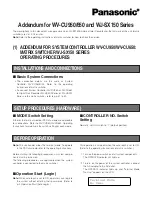
In non-deterministic mode (the
bgp non-deterministic-med
command is applied), paths are compared in the order in which they
arrive. This method can lead to Dell Networking OS choosing different best paths from a set of paths, depending on the order in which they
were received from the neighbors because MED may or may not get compared between the adjacent paths. In deterministic mode, Dell
Networking OS compares MED between the adjacent paths within an AS group because all paths in the AS group are from the same AS.
NOTE:
The
bgp bestpath as-path multipath-relax
command is disabled by default, preventing BGP from load-
balancing a learned route across two or more eBGP peers. To enable load-balancing across different eBGP peers, enable the
bgp
bestpath as-path multipath-relax
command. A system error results if you configure the
bgp bestpath as-path
ignore
command and the
bgp bestpath as-path multipath-relax
command at the same time. Only enable one
command at a time.
The following illustration shows that the decisions BGP goes through to select the best path. The list following the illustration details the
path selection criteria.
Figure 20. BGP Best Path Selection
Best Path Selection Details
1
Prefer the path with the largest WEIGHT attribute.
2
Prefer the path with the largest LOCAL_PREF attribute.
3
Prefer the path that was locally
Originated via a network
command,
redistribute
command or
aggregate-address
command.
a
Routes originated with the
Originated via a network
or
redistribute
commands are preferred over routes
originated with the
aggregate-address
command.
4
Prefer the path with the shortest AS_PATH (unless the
bgp bestpath as-path ignore
command is configured, then
AS_PATH is not considered). The following criteria apply:
a
An AS_SET has a path length of 1, no matter how many ASs are in the set.
b
A path with no AS_PATH configured has a path length of 0.
c
AS_CONFED_SET is not included in the AS_PATH length.
d
AS_CONFED_SEQUENCE has a path length of 1, no matter how many ASs are in the AS_CONFED_SEQUENCE.
5
Prefer the path with the lowest ORIGIN type (IGP is lower than EGP, and EGP is lower than INCOMPLETE).
6
Prefer the path with the lowest multi-exit discriminator (MED) attribute. The following criteria apply:
a
This comparison is only done if the first (neighboring) AS is the same in the two paths; the MEDs are compared only if the first
AS in the AS_SEQUENCE is the same for both paths.
b
If you entered the
bgp always-compare-med
command, MEDs are compared for all paths.
c
Paths with no MED are treated as “worst” and assigned a MED of 4294967295.
172
Border Gateway Protocol IPv4 (BGPv4)
Summary of Contents for S3048-ON
Page 1: ...Dell Configuration Guide for the S3048 ON System 9 11 2 5 ...
Page 137: ...0 Gi 1 1 Gi 1 2 rx Flow N A N A 0 0 No N A N A yes Access Control Lists ACLs 137 ...
Page 142: ...Figure 10 BFD Three Way Handshake State Changes 142 Bidirectional Forwarding Detection BFD ...
Page 241: ...Dell Control Plane Policing CoPP 241 ...
Page 287: ... RPM Synchronization GARP VLAN Registration Protocol GVRP 287 ...
Page 428: ...Figure 53 Inspecting the LAG Configuration 428 Link Aggregation Control Protocol LACP ...
Page 477: ...Figure 73 Configuring Interfaces for MSDP Multicast Source Discovery Protocol MSDP 477 ...
Page 478: ...Figure 74 Configuring OSPF and BGP for MSDP 478 Multicast Source Discovery Protocol MSDP ...
Page 483: ...Figure 77 MSDP Default Peer Scenario 2 Multicast Source Discovery Protocol MSDP 483 ...
Page 484: ...Figure 78 MSDP Default Peer Scenario 3 484 Multicast Source Discovery Protocol MSDP ...
Page 745: ...Figure 104 Single and Double Tag TPID Match Service Provider Bridging 745 ...
Page 746: ...Figure 105 Single and Double Tag First byte TPID Match 746 Service Provider Bridging ...
















































